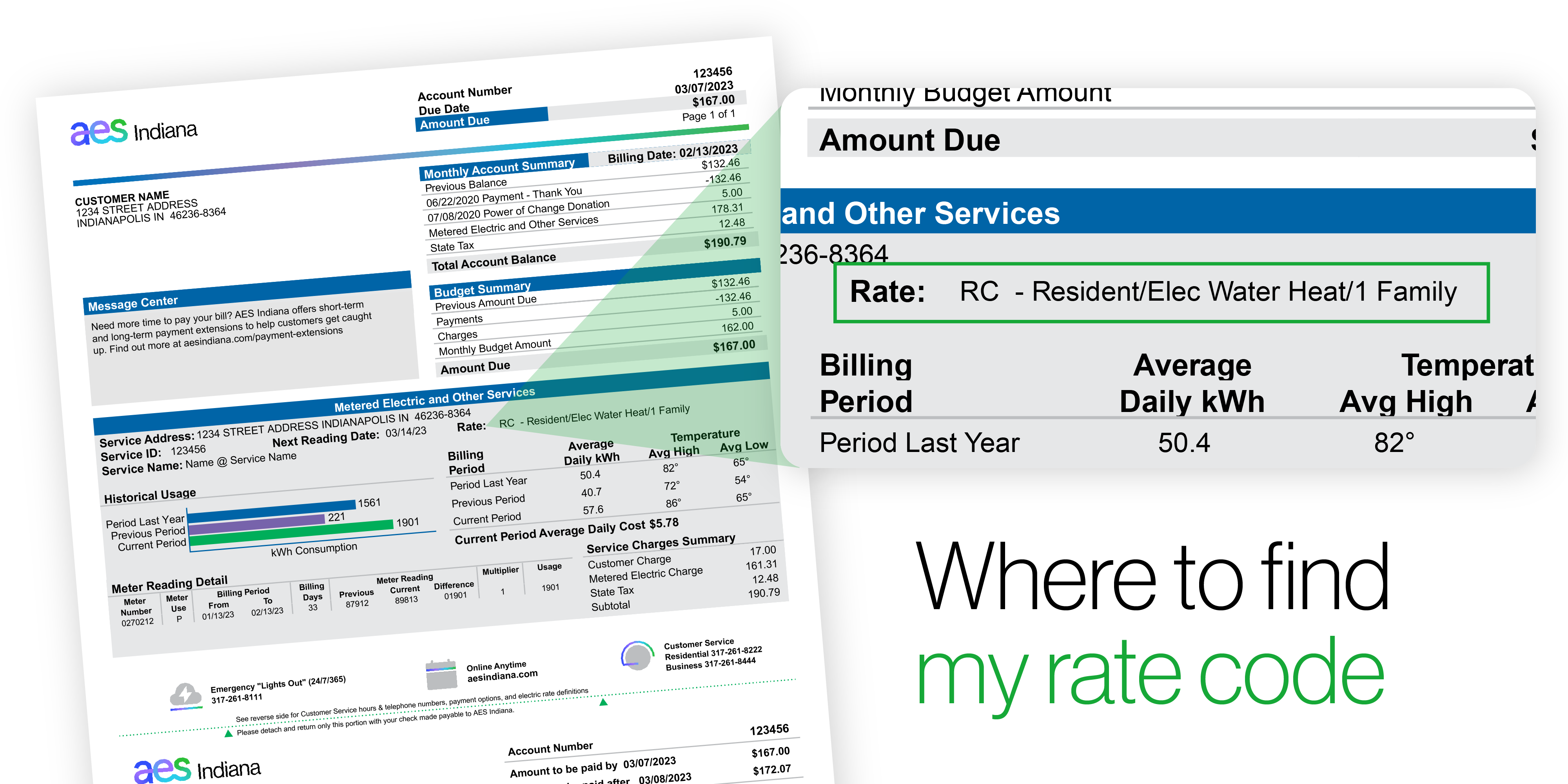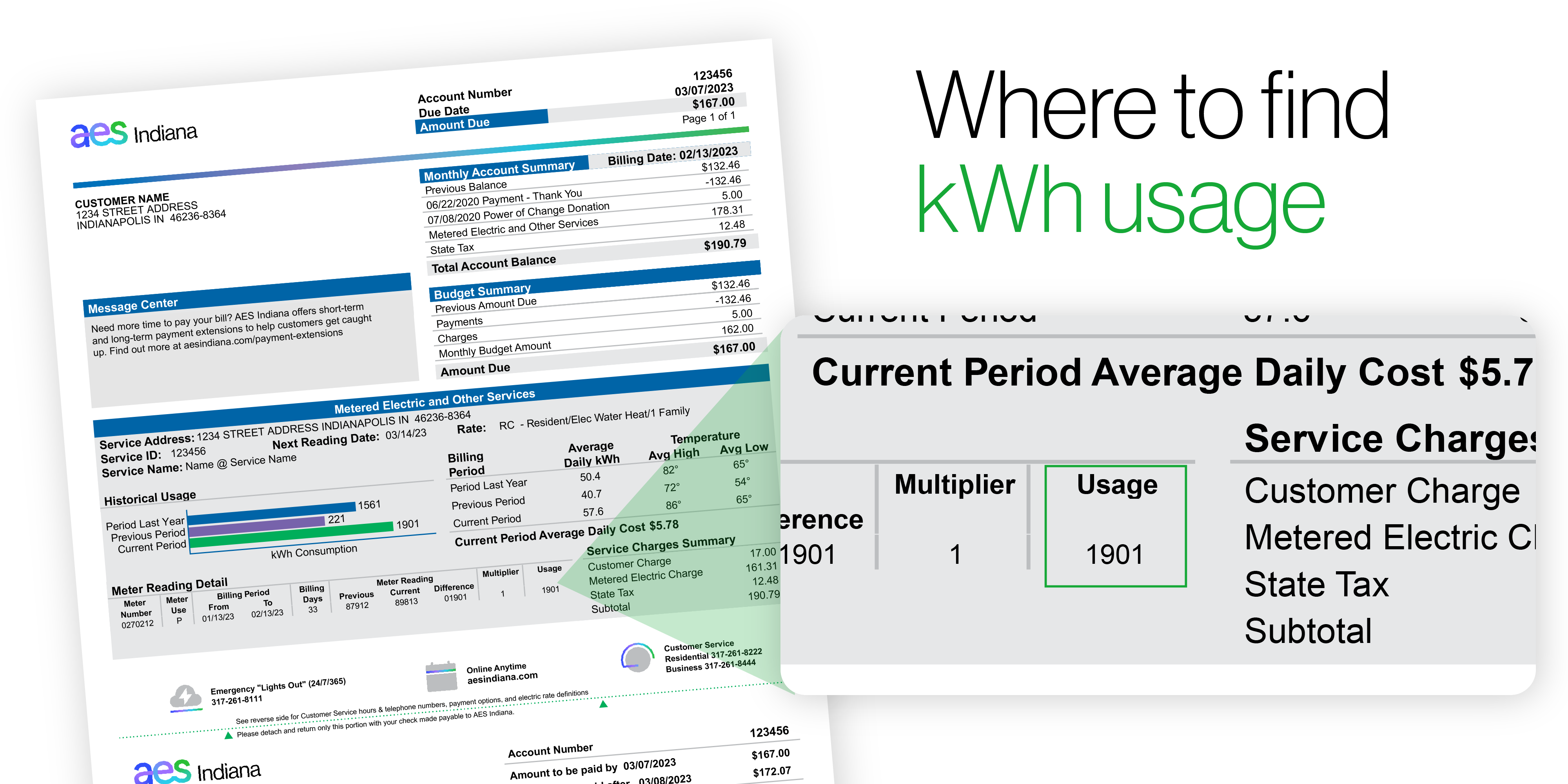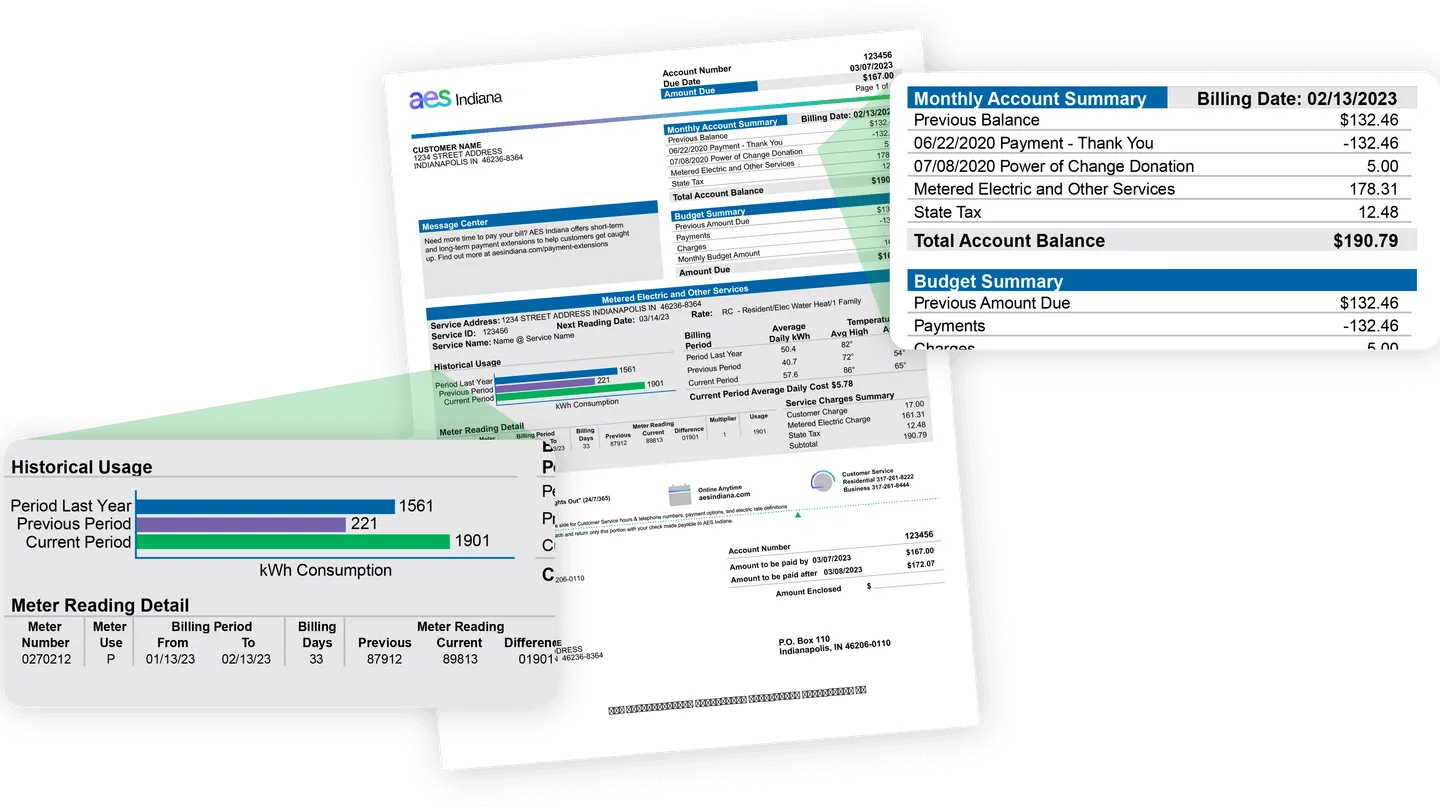Powering a reliable, affordable, and sustainable energy future
AES Indiana filed a Regulatory Rate Review with the Indiana Utility Regulatory Commission (IURC) on June 3, 2025. AES Indiana is committed to making investments that will support Central Indiana and the customers we serve with cost-effective and reliable electric service now and well into the future.
On October 15, 2025, AES Indiana announced the filing of a settlement agreement in its current rate review proceeding with the IURC. Read more here.
Why AES Indiana is requesting a rate review
What to expect: timeline and impact
If AES Indiana's rate review request is approved, a residential customers using 1,000 kWh per month will see a $10 increase. This adjustment averages 3.35% annually over a 2-year period.
Additionally, AES Indiana has agreed to not implement new base rates until January 1, 2030 after this current rate request is implemented.
How do I plan for this change?
Customers can use the AES Indiana Bill Calculator to estimate how the proposed rates may impact your household based on energy usage.

Rate calculator
How could a rate change affect your bill?
Enter the number of kilowatt-hours (kWh) usage from your most recent bill in the field below to estimate your monthly increase. (A kilowatt-hour is the unit of measurement for the amount of electricity used in a household. One kilowatt-hour is comparable to ten hours of TV-watching, or vacuuming for one hour.)
Got your AES Indiana bill in front of you?
You can log into your AES Indiana account and look at your most recent bill.
Your estimated increase*
Phase I Increase
$ 0.00
Phase II Increase
$ 0.00
Total Cumulative Increase
$ 0.00
If you are an AES Indiana commercial and industrial customer, please contact your account manager for details.
Your questions answered
We’re aligning rates with the increased cost of providing electric service – including grid maintenance, infrastructure improvements, and the transition to cleaner energy sources. These changes help ensure reliable, resilient service while preparing for future energy needs.
Yes. AES Indiana has consistently offered some of the lowest residential rates among Indiana investor-owned utilities and remains committed to affordability. Even with new rates implemented, AES Indiana anticipated remaining among the lowest rates among investor-owned utilities in Indiana.
Our energy efficiency programs are available year-round and help customers understand and control their energy usage. Learn more here.
We’ve made significant investments to strengthen infrastructure, speed up storm recovery, and avoid outages. For example:
-
During our most recent Level III storm on April 2, 2025, our upgrades helped avoid 39,400 customer outages.
-
During Hurricane Helene in 2024, we avoided close to 30,000 additional outages through smart grid technologies.
Vegetation, like overgrown trees, is the leading cause of outages accounting for approximately 30% of service interruptions. Rising costs and expanded tree trimming programs are necessary to protect reliability.
We understand customers count on us to keep costs as low as possible and increasing bills can be a financial challenge for our customers. For more information, visit aesindiana.com/payment-assistance.
No. AES Indiana invests over $2 million annually in charitable contributions in Central Indiana funded by AES Indiana shareholder dollars. AES Indiana does not pass on the cost of its community investments or advertising to customers.
No. Additional cost recovery for servicing these customers is not included in AES Indiana’s current rate proposal, and potential large-load customers’ future service is not reflected in the proposed rates. Once large-load customers commit to locating in AES Indiana’s service area and a plan is developed, AES Indiana will seek necessary approvals from the IURC for transmission projects, generation projects, and appropriate rate treatment. This process will include stakeholder input and regulatory oversight.
No. And this rate review does not include any large-load customers like data centers. AES Indiana is obligated to serve all customers in its service territory and sets rates based on a Cost-of-Service methodology. This ensures all customers, including large-load data centers, pay their fair share. The additional usage from large-load data centers can provide a larger base over which to recover the company’s fixed costs of providing electric service.
Building the future of energy in Indiana
AES Indiana is investing in a diverse and balanced energy mix - including natural gas, wind, solar, and battery storage - to ensure reliable, affordable, and sustainable energy now and for generations to come.
Recent and Upcoming AES Indiana Generation Projects:
-
Pike County Battery Energy Storage System (BESS): Now operational, delivering 200 MW of power during peak demand
-
Petersburg Energy Center: Adding 250 MW of solar and 180 MWh of storage by end of 2025
-
Petersburg Units 3 & 4: Repowering from coal to natural gas by end of 2026
-
Hoosier Wind (106 MW): Acquired in Benton County
-
Hardy Hills Solar (195 MW): Now in commercial operation
-
Crossvine Solar + Storage: Approved by the IURC, delivering 85 MW of solar and 85 MW / 4 hours of battery storage by mid-2027
How are you keeping customers informed?
1. Bookmark this page and check back frequently for updates
3. Make sure your contact information in your online AES Indiana account is updated
-
Log in to your online account
Image
-
Everything you need is located under “My Profile” on your account homepage. Ensure you have the best email address and phone number on file. Click on “Alerts & Notifications” to update your preferences on how you want to be notified (email, text and / or call)
Image







